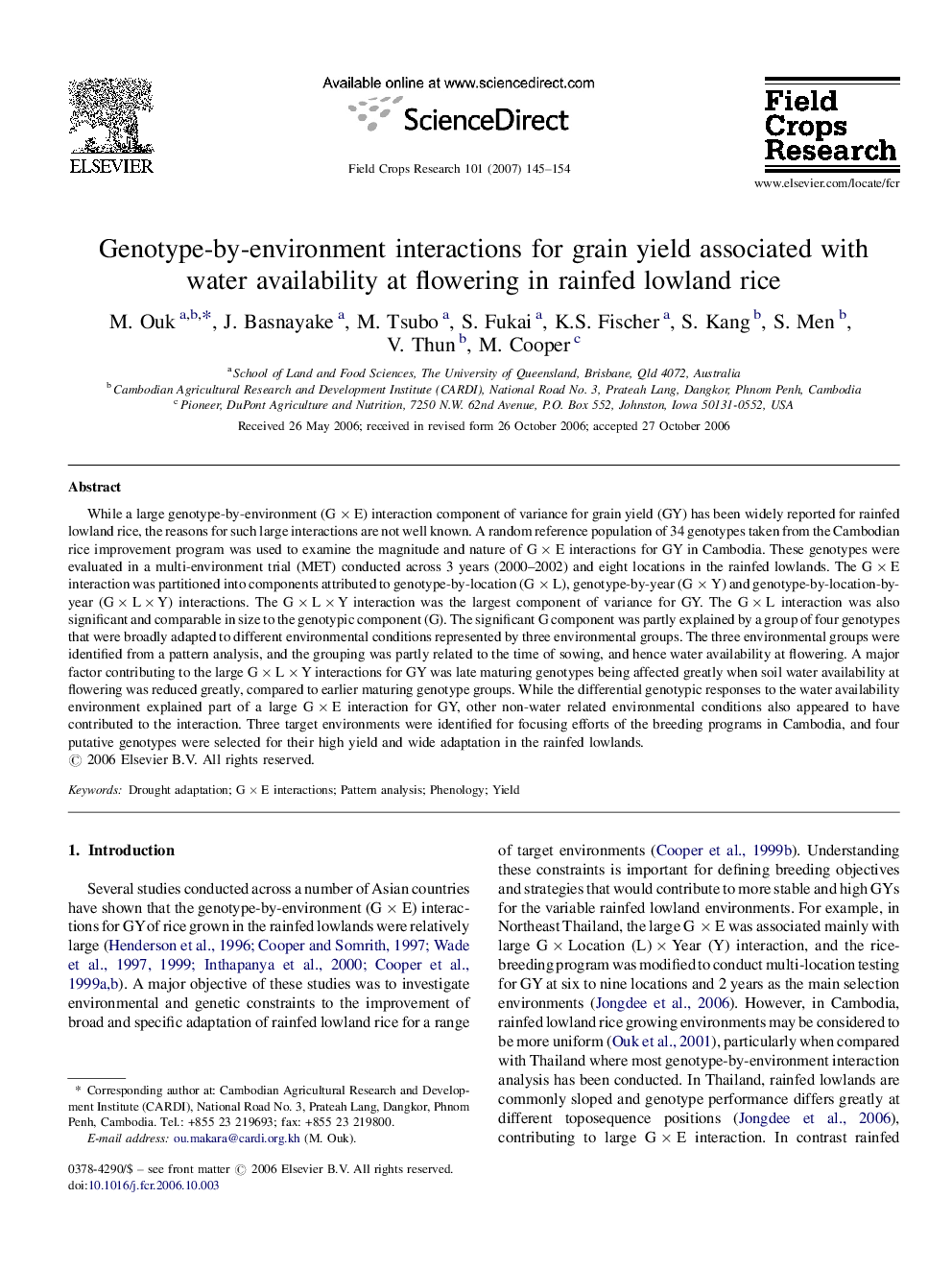| کد مقاله | کد نشریه | سال انتشار | مقاله انگلیسی | نسخه تمام متن |
|---|---|---|---|---|
| 4511647 | 1321926 | 2007 | 10 صفحه PDF | دانلود رایگان |

While a large genotype-by-environment (G × E) interaction component of variance for grain yield (GY) has been widely reported for rainfed lowland rice, the reasons for such large interactions are not well known. A random reference population of 34 genotypes taken from the Cambodian rice improvement program was used to examine the magnitude and nature of G × E interactions for GY in Cambodia. These genotypes were evaluated in a multi-environment trial (MET) conducted across 3 years (2000–2002) and eight locations in the rainfed lowlands. The G × E interaction was partitioned into components attributed to genotype-by-location (G × L), genotype-by-year (G × Y) and genotype-by-location-by-year (G × L × Y) interactions. The G × L × Y interaction was the largest component of variance for GY. The G × L interaction was also significant and comparable in size to the genotypic component (G). The significant G component was partly explained by a group of four genotypes that were broadly adapted to different environmental conditions represented by three environmental groups. The three environmental groups were identified from a pattern analysis, and the grouping was partly related to the time of sowing, and hence water availability at flowering. A major factor contributing to the large G × L × Y interactions for GY was late maturing genotypes being affected greatly when soil water availability at flowering was reduced greatly, compared to earlier maturing genotype groups. While the differential genotypic responses to the water availability environment explained part of a large G × E interaction for GY, other non-water related environmental conditions also appeared to have contributed to the interaction. Three target environments were identified for focusing efforts of the breeding programs in Cambodia, and four putative genotypes were selected for their high yield and wide adaptation in the rainfed lowlands.
Journal: Field Crops Research - Volume 101, Issue 2, 5 March 2007, Pages 145–154